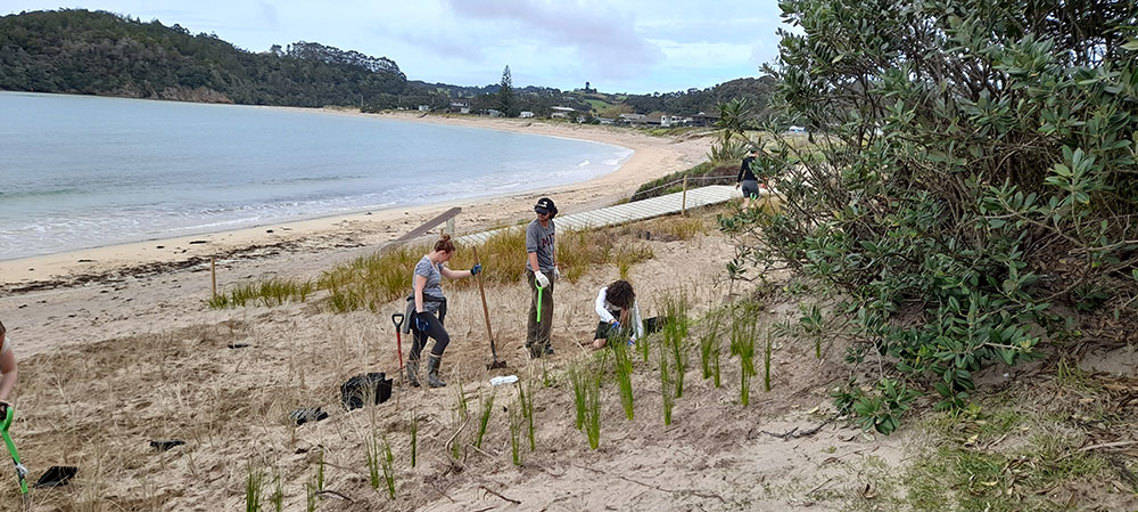Story
Matapōuri Dune Restoration Project
Alongside Te Whanau a Rangiwhakaahu Hapū, Matapōuri Kaitiaki, Department of Conservation (DOC) and Whangarei District Council (WDC) we have been working to support hapū and care group aspirations to restore the natural biodiversity of the dune areas in Otito and Te Wairoa reserves in Matapōuri.

Matapouri working bee - July 2023.
Matapōuri Kaitiaki, with Rangiwhakaahu Hapū and CoastCare have devised a dune restoration plan. Many of the proposed initiatives are already underway through multiple volunteer working bees organised by Rangiwhakaahu Hapū, Matapōuri Kaitiaki, DOC and NRC CoastCare and with the support of contractors funded by WDC. These initiatives include fencing to encourage people to keep off the dune area and replacing weed species with eco-sourced native dune plants.
Ngunguru School has also been involved in the project and they have joined us each year to dig out weeds and plant native species in the Te Wairoa reserve. Alongside this they have been learning about the natural biodiversity of dunes.
Severe weather events, including Cyclone Gabrielle, have caused erosion to the dune areas but this has been less severe here than in other parts of Matapōuri Beach. Continuing to replace exotic vegetation with native plants will increase the resilience and function of the dunes and allow them to recover from storm events.
Kayla Raines, who started the Matapōuri Kaitiaki Project with her partner in 2018, says the Matapōuri rohe, with its historic coastal forests is a special place. Fauna such as the North Island brown kiwi and little blue penguin are just some of the taonga that need protecting for future generations. Predator and weed control has been key to restoring biodiversity, and this has only been possible with the commitment and support of mana whenua and continued mahi with community members and volunteers.
If you’re thinking of getting involved with CoastCare, Kayla says; “please get involved, it’s good for the environment and great for children to be involved in these community projects. One day they will see the results of the work you did – and they did - in the years before, as the biodiversity of the coast is restored. Your participation will help the duneland ecosystems stay resilient and enable you to contribute to your community. You will be proud of your achievements!”



